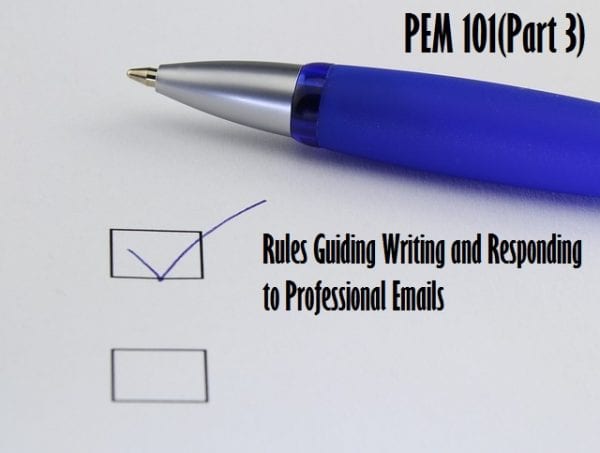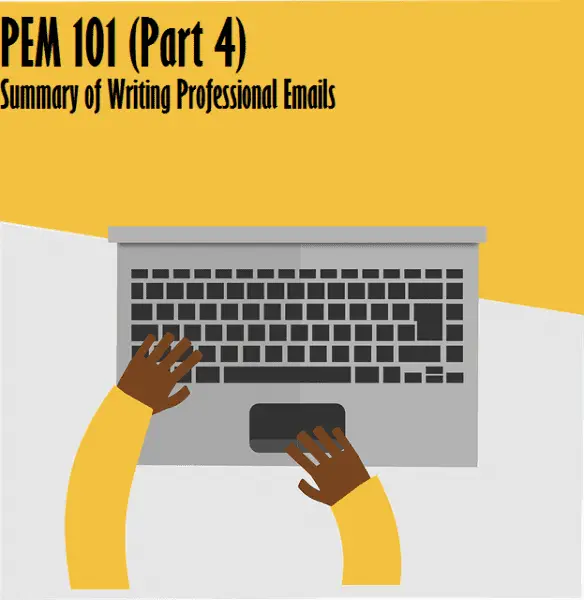The closing of your business email may be the last part of the email but it is one of the most important parts as it gets many people confused- I used to be confused too.
So, let me show you how I got through my confusion.
There are so many ways to end business e-mails and it’s quite easy to get confused on which closing remark to use for what e-mail. You want your closing remark to sound appropriate but how do you choose the appropriate closing remark?
Guidelines to Help You Choose Appropriate Closing Remark
Here are some guidelines to help you choose the appropriate closing remark for your business emails.
1. Consider the Type of Letter You Are Writing
As you already know, there are three types of letters; the formal letter, the informal letter and the semi-formal letter.
Now, in business, the best types of letters for communicating with clients are the formal and semi-formal letters. While you may use the formal approach for communicating with business associates, investors, bankers and prospective clients, you could use the semi-formal approach when communicating with existing clients and associates that you are familiar with.
So, the first step to choosing an appropriate closing remark is deciding on the type of letter you want to write.
2. Consider Your Relationship With the Recipient
How close are you to this person? For how long have you known him/her?
Some closing remarks are reserved for people you already know and have a ‘relationship’ with on a personal level. It would seem rather rude and absolutely inappropriate to use some types of closing remarks for people you are not quite close to.
Now, imagine that you sent me an email to inquire about some services which my company offers and then I replied your mail, supplying you with the information you needed and I decided to end my mail with a closing remark like ‘Love always’. Won’t that make you feel somewhat uncomfortable?
3. Punctuate Correctly
A closing remark must always be followed by a comma and then space before you sign your name. This is the professional way to end a business email.
You can only break this rule when you are writing informal emails where it doesn’t really matter how you close your letter but for any professional emails you are writing, you should stick to this format.
4. Include Your Full Name
When ending professional e-mails, you should always write your full names after the closing remark. Avoid using nicknames or initials only as this may be considered rude and unprofessional.
5. Include Your Corporate Information
If you are writing your mail on a letterhead, you can choose to skip this part as there are possibilities that your contact information would already be included in your letterhead.
When ending professional emails, you could write your job role and company name after your name followed by your company’s website address.
6. Use a Professional Email address
I have seen this countless times; it’s always quite puzzling. Someone decides to send you a supposed professional email with a very unprofessional email address like ‘[email protected]’ or ‘[email protected]’.
Okay, maybe I’m exaggerating a little bit but please, if you are going to be sending out professional emails, create a professional email address with a respectable name for that.
A professional email address should include your first name and last name or at least one of them.
For example – [email protected] or [email protected] or [email protected]
7. Don’t Be Over Familiar
I already mentioned this but because of how important it is, let me reiterate.
It is important that you don’t get too familiar with your clients with the kind of closing remark you choose. You may feel that it’s no harm to use any kind of closing remark you choose but it actually is.
You can put your client in an uncomfortable position by using inappropriate closing remarks and worse still; you may put yourself in a position where people start to see you as unprofessional.
To help you choose the right closing remarks for your business letters, I have decided to group the various types of closing remarks into formal and informal categories so that anytime you need to write letters, you can always choose an appropriate closing remark.
Many thanks,
| Formal Letters | Informal Letters |
| Yours sincerely | Cheers |
| Yours truly | Hugs and kisses |
| Yours faithfully | Forever yours |
| Warm regards | Regards |
| Kind regards | Love always |
| Best regards | Yours lovingly |
| Your brother/father/mother/(Insert relationship with recipient) | |
| Sincerely | With affection |
| With regards | Love and happiness |
| Many thanks | Love you |
| With appreciation | Have fun |
| Yours obediently | Keep smiling |
| With best wishes | Cheers |
| Most heartily | Goodbye |
| With anticipation | Adieu |
Here’s the Basic Standard for Ending E-mails Professionally
Yours faithfully,
(Leave a space. Normally, that space is supposed to be reserved for your signature. If you have a digital signature, you can insert it here but if you do not, just leave the space and move on to the next step)
(Insert your full name)
(Insert your designation)
(Insert contact details and email address)
That’s the simple format for writing a professional email so let’s go practical-:
Sample 1: Ending Emails Professionally
Sample 2: Ending Emails Professionally
Yours faithfully,
Peter Piper Faniroti
Managing Director, Faxyron Ltd.
0813464321/ [email protected]
Sample 3: Ending Emails Professionally
Yours respectfully,
Jumoke DaSilva
Globalvex Telecoms
01-045123
Sample 4: Ending Business Emails for Old Professional Contacts
Sample 5: Ending Business Emails for Old Professional Contacts
Sample 6: Ending Business Emails for Old Professional Contacts
Thank you for your time.
Doyin Adewale
Secretary, Likas Bookshop
If you look closely, you would see that the punctuation has changed. Instead of a comma, you now have a full stop. This is because unlike the previous samples, you are making full statements here.
You can also use situational closing remarks like:
- I apologize for the inconvenience.
- Please accept my deepest sympathy.
- I look forward to seeing you again.
Now, go ahead and write your own samples and like I always say, make sure it is better than mine.
To learn more about “writing emails professionally“, read our series of articles on Email Writing Tips.






Good job! Very well structured and easy to follow. Would recommend to those starting their formal writings “careers” 🙂
I always have certain problems with mailing. I always reply quickly and when I’m in a hurry people often don’t understand what I mean. Your article helps me improve my mailing skills. Author gives a great piece of advice about familiarity. First impressions are a good start for constructive conversation, especially in business, don’t forget about it.